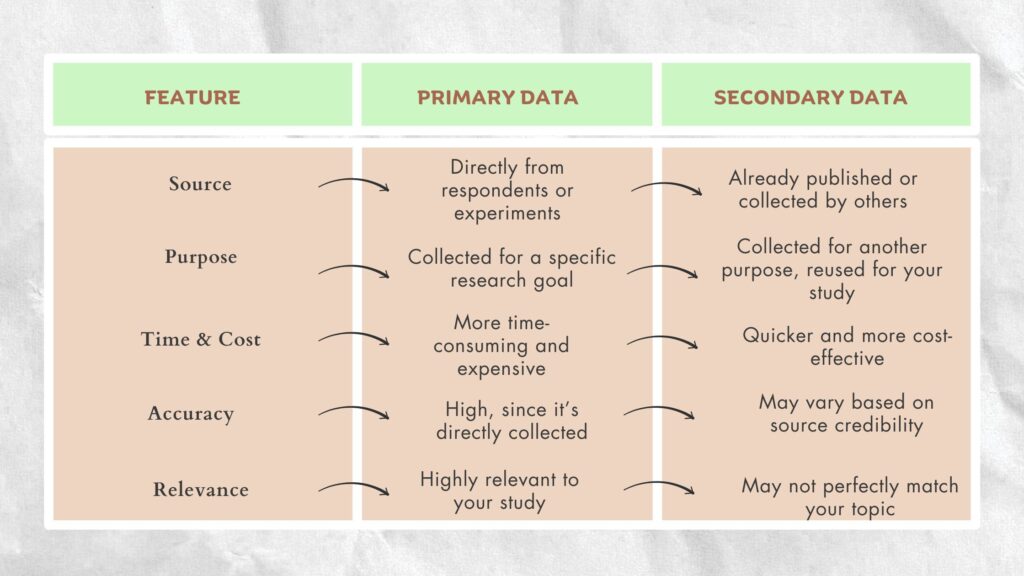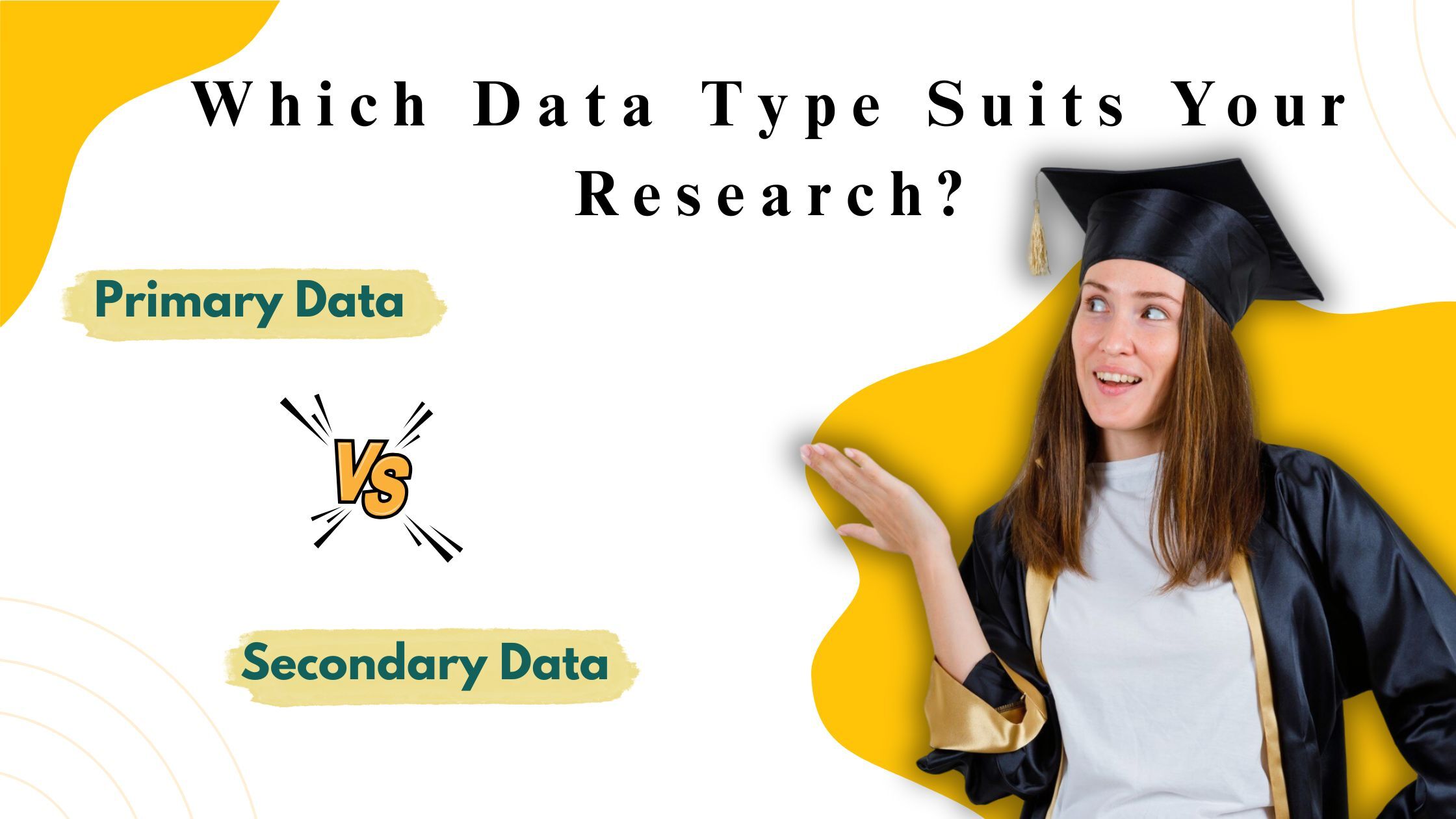Primary vs Secondary Data Collection: What’s the Difference and When to Use Them?
Kenfra Research - Bavithra2025-07-24T10:44:23+05:30In the world of research, understanding Primary vs Secondary Data is essential, as data forms the backbone of any meaningful study. Whether you’re working on academic research, conducting market analysis, or running business surveys, the type of data you collect can significantly influence your results. Without the right kind of data, your conclusions may be weak, misleading, or incomplete. That’s why researchers need to clearly distinguish between different data types and choose the most appropriate method based on their goals, timeframe, and resources.
One of the most fundamental distinctions in data collection is the difference between Primary vs Secondary Data, as each serves a different purpose and is gathered through different processes. Primary data is collected firsthand for a specific study, offering original and highly relevant insights. Secondary data, on the other hand, is information that has already been collected and published by others, useful for background understanding or supporting evidence. In this blog, we’ll dive deep into the differences between these two types of data, explore their advantages and disadvantages, and provide practical tips on when and how to use each effectively in your research journey.
What is Primary Data?
Primary data is data you collect first-hand. That means you go out into the field — physically or digitally — and gather information directly from the source for a specific purpose.
Examples of Primary Data Collection:
- Surveys and Questionnaires
- Interviews (face-to-face, phone, or video calls)
- Focus Group Discussions
- Experiments or Observations
- Sensor Data (like from IoT devices or lab instruments)
This data is original, fresh, and customized to your specific research problem.
What is Secondary Data?
Secondary data, on the other hand, is data that someone else has already collected for some other purpose, but you use it for your study.
Examples of Secondary Data Sources:
- Research articles and journals
- Books and government reports
- Online databases like Scopus, JSTOR, Statista
- Company records or financial reports
- Census data or survey data published by others
This data is already available and can save you a lot of time and effort.
Key Differences Between Primary and Secondary Data

Advantages of Primary Data
- Tailored for Your Study
You collect exactly what you need, how you need it. - Up-to-Date
The data is fresh and current. - High Accuracy & Reliability
Because you control the method, the data quality is often better. - Detailed Insights
You can ask specific questions and explore responses more deeply.
Disadvantages of Primary Data
- Expensive & Time-Consuming
Designing a survey, collecting data, and analyzing it takes resources. - Hard to Access Large Sample
Especially for PhD or student researchers with limited access or budget. - Requires Skill
You need to know how to design surveys, conduct interviews, or run experiments.
Advantages of Secondary Data
- Quick Access
Data is readily available online or in libraries. - Cost Effective
Often free or inexpensive to obtain. - Covers Wide Areas
Includes historical data, national reports, industry-level stats — things hard to collect on your own. - Supports Background Study
Perfect for literature review and understanding the research gap.
Disadvantages of Secondary Data
- May Not Match Your Objective
Data collected for one purpose may not fit your topic exactly. - Outdated
Older data may not reflect current trends. - Quality May Vary
You depend on the accuracy and honesty of the original source. - Limited Control
You can’t change the variables, methods, or sampling.

When Should You Use Primary Data?
Use primary data collection when:
- You need very specific data for your research question
- You want current or real-time data
- Existing data is outdated, missing, or not trustworthy
- You’re testing a new product, idea, or intervention
- You have access to the field, tools, and respondents
Example: A company launching a new product may run focus groups to collect customer feedback.
When Should You Use Secondary Data?
Use secondary data when:
- You are doing a literature review
- You need historical or national-level data
- Time or budget is limited
- You want to support or validate primary data
- The data already exists in reliable sources
Example: A student working on a research paper about social media trends can use Statista or government reports.
Can You Use Both?
Yes! In fact, many research projects use both types of data — this is called a mixed-methods approach.
- Start with secondary data to understand the background and identify gaps
- Then use primary data to explore those gaps directly
This approach makes your study stronger and more credible.
Final Thoughts
Choosing between Primary vs Secondary Data is a key decision that depends on your research objectives, available time, resources, and the type of information you need. If your study demands original, specific, and firsthand data tailored to your research question, primary data collection is the ideal choice. It allows you to design your own methods and collect fresh insights. However, if you’re short on time or need broad background information, secondary data can be a cost-effective and time-saving option, offering access to existing research, reports, and databases. In many cases, combining both types — using secondary data for context and identifying gaps, followed by primary data for deeper exploration — can lead to more balanced and comprehensive results. Understanding when and how to use each type effectively is essential for producing meaningful and high-quality research.









Leave a Reply